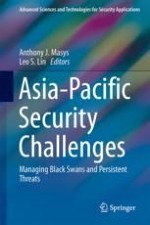2018 | OriginalPaper | Buchkapitel
From Data Modeling to Algorithmic Modeling in the Big Data Era: Water Resources Security in the Asia-Pacific Region under Conditions of Climate Change
verfasst von : Jason Levy, Ross Prizzia
Erschienen in: Asia-Pacific Security Challenges
Aktivieren Sie unsere intelligente Suche, um passende Fachinhalte oder Patente zu finden.
Wählen Sie Textabschnitte aus um mit Künstlicher Intelligenz passenden Patente zu finden. powered by
Markieren Sie Textabschnitte, um KI-gestützt weitere passende Inhalte zu finden. powered by
